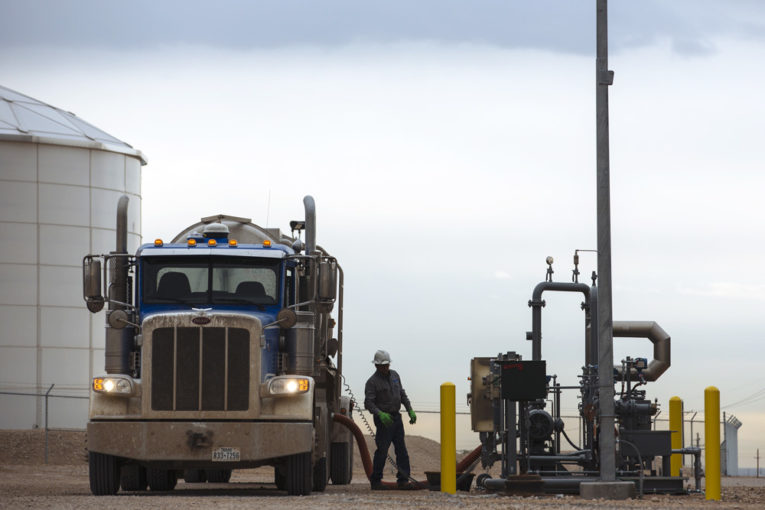
Get used to more scary oil-market volatility in 2019. This is the message coming from leading industry strategists and forecasters after a bruising end to the year when Brent crude dipped below US$50 per barrel.
Although the benchmark has recovered a little in recent days, forecasters are concerned about the prospects of a sustained rebound. Unpredictable geopolitical upheavals like Brexit and President Donald Trump’s trade wars are expected to weigh more heavily on sentiment than the fundamentals of supply and demand.
“One of the key lessons learnt in 2018, painfully by some, is that market sentiment can shift violently without much change in fundamentals, requiring a steady, holistic perspective,” said Chris Midgley, global head of analytics at S&P Global Platts. “It is clear that this volatility will remain a feature across the energy markets in 2019.”
Global demand is becoming harder to predict. The world consumed on average a record 100 million barrels per day of crude in 2018 but the positive outlook is being clouded by weaker economic growth.
The Paris-based International Energy Agency (IEA), in its final market report of the year, kept its demand growth figure unchanged at 1.4 million barrels per day, blaming a weakening economy for offsetting the otherwise positive environment for oil consumption caused by weaker prices.
Meanwhile, stockpiles of unwanted crude continue to build up in tanks around the world. Inventories in OECD industrialized economies continued to build in October for a fourth consecutive month, by 5.7 million barrels, to an ocean of almost 2.9 billion barrels, according to the IEA. The build sent stockpiles above their five-year average for the first time since March.
“Fundamentals in the oil market look bleak, with slowing economic growth and weaker-than-expected demand pushing the market firmly into bear territory,” said Ashley Kelty, oil and gas research analyst at Cantor Fitzgerald Europe.
On the supply side, there is also little cause for certainty. Forced on the defensive, OPEC and its allies, led by Russia, had to cut output by a combined 1.2 million barrels per day starting in January. However, delivering on their pledges will be hard to achieve given the tough economic conditions many members now face.
Saudi Arabia — the world’s largest exporter — requires prices to trade significantly above US$80 per barrel to balance its bloated state budget. The kingdom remains locked in a bitter cycle of depending on oil rents despite repeated efforts to diversify its one-dimensional economic model. OPEC’s discipline also depends on the continued co-operation of Russia.
The Kremlin has cautioned against the alliance — which controls 40 per cent of the world’s supplies — making any hasty decisions in response to crude’s rout. However, after years of falling back on their foreign currency reserves to support their economies, few producers in the Gulf region have much financial room to manoeuvre.
Complicating their task further are U.S. producers whose success has undermined the cartel’s power in oil markets. U.S. crude production is forecast to bust through 12 million barrels per day in 2019, despite lower prices forcing some operators to cut capital expenditure budgets and rig counts beginning to ease.
The number of active permits to drill — which indicates the strength of future activity — ended the year at their highest level since 2013. The big question is how long can U.S. output continue to grow and remain economic for operators?
OPEC tried to answer the question in 2014 when, led by Riyadh, it launched a poorly executed price war to slow its booming North American rivals. But the tactic failed spectacularly.
It is clear that this volatility will remain a feature across the energy markets in 2019.
Chris Midgley, S&P Global Platts
Nevertheless, some analysts have started to question the resilience of U.S. producers — many laden with debt and facing rising operating costs — to continue competing and growing at current price levels.
“If prices remain at these levels for a sustained period, North American producers are likely to begin curbing investment and production growth,” wrote Giovanni Staunovo, oil analyst at investment bank UBS. “That said, the Saudis, the backbone of OPEC+, are already leading by example and have already scaled back their exports this month.
“We expect improving oil inventory dynamics — primarily in the U.S. — to support oil prices over the coming months.”
Disruptions to supply are more likely to come from more exotic locations. Venezuela’s oil industry is on its knees and the country’s oil minister Manuel Quevedo — a former brigadier general — will take over OPEC’s rotating presidency in 2019.
The South American producer pumped 1.17 million barrels per day in November, according to the latest Platts OPEC production survey, down 630,000 barrels per day year-on-year.
Elsewhere, the political situation in Libya remains combustible with the threats to its oil infrastructure from rogue militias an ongoing occurrence.
Of course, less oil from either Venezuela or Libya flowing on to markets could be a short-term blessing for prices — but it also could be a sign that more frightening volatility is ahead.
— Andy Critchlow is the head of energy news at S&P Global Platts.
You can read more of the news on source
